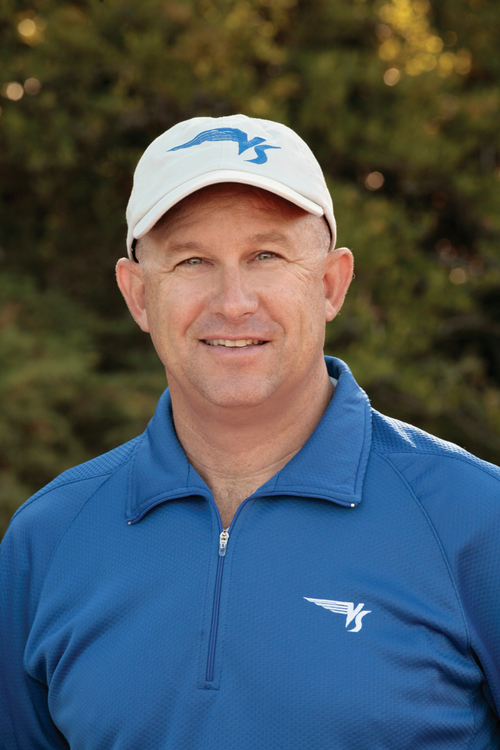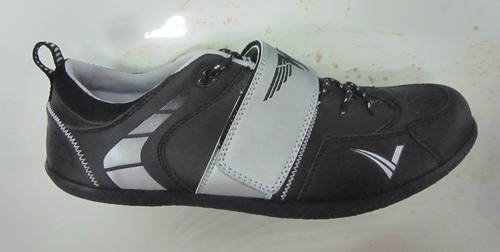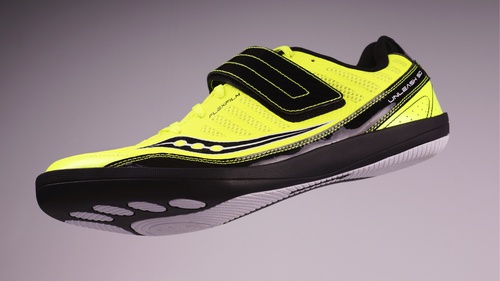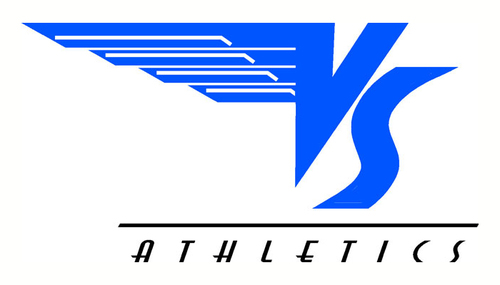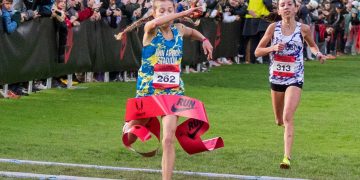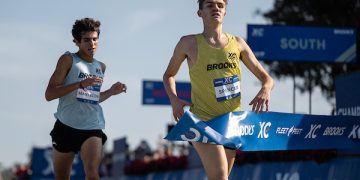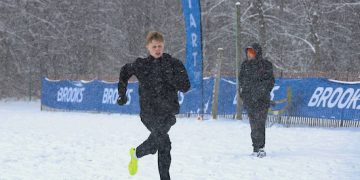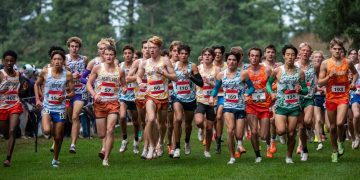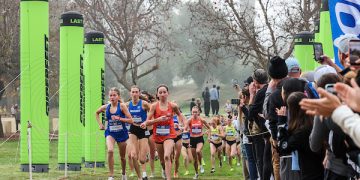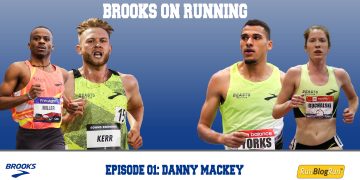VS Centrifugal, Black, Throw Shoe, courtesy of VS Athletics
RBR, # 1.)
Where did the VS Centrifugal come from?
Billy Smith: This is a great question whose
answer is a long story. One of the
first big deals Venue Sports came across in ’93 was a wealth of Puma shoes from
the late Coach Don Riggs (San Jose State legend).
Among these
shoes was the Puma hammer/discus shoe with a textured bottom. It was a snug fitting shoe with a
textured bottom. At $20, these
sold out right away. Many of
the coaches threw in this shoe or the similar Adidas shoe and recommended it
for their athletes. The sole was
great for slick wet conditions.
One example is of a story, confirmed by John Godina, of the UCLA/ Cal
dual meet. It was pouring rain
during the meet in Berkeley. One
of the UCLA athletes brought a pair of the Puma shoes to the meet, the only
pair at the meet. While the Cal
athletes threw, the Bruin athletes switched shoes; every Bruin thrower wore the
one pair of Puma shoes. UCLA throwers swept the meet.
Over the past 20 years, I have constantly heard coaches’
yearning for the hammer/discus shoe that Puma and Adidas made. One of the coaches I have worked with
over the years is Dan Mecca at Manhattan College. As fate would have it, while visiting the factory making the
VS Hybrid XT, I found a sole similar to the hammer/discus shoes. Meanwhile, Dan found a pristine pair of
the Adidas Hammer/Discus shoe made in West Germany. The sole was very close.
We made a few prototypes, tweaked the sole a bit and came up
with the Centrifugal in its current state. Instead of kangaroo leather, it is synthetic leather. Also, we added a mid foot strap to
secure the foot. This late spring,
we made some wear test shoes and had some throwers test them.
Some athletes actually wore the shoes
in Eugene at the Olympic Trials.
Along with Dan Mecca, other wear testers included John Powell (wore the
Puma and Adidas shoes), Jud Logan, Bob Mackay, and Mac Wilkins. I gave a few pair to throwers at John
Godina’s WTC camp at Sacramento state.
The sole wore well and feedback was positive. The overwhelming comment from the throwers was that they
could “feel the ring”.
Still,
being a small company, I have to buy a lot of shoes and this is a big
risk. The final convincing moment
was when Notre Dame Sherman Oaks throws coach Nick Garcia tested the shoe. He stated he took over 1,000 throws and
the shoes held up well. Again, he
loved the fact that he could feel the ring. The impression I got from him was that the shoe was too good
not to make. Hence, a little
late, but it is right and worth bringing to market. The shoes should be available the beginning of February
2013.
RBR, # 2) VS Athletic has been around for how long? It was Springco Athletics and Venue
Sports, right?
Billy Smith: Correct, VS Athletics is the merged company of Venue Sports
and Springco Athletics, hence VS, Venue-Springco. Brian Springer
founded Springco in 1982.
Brian
was an industrial arts teacher, track coach, and track official. He saw a need to supply track &
field implements and equipment to track coaches in Southern California. Over the years, he tinkered, designed,
and manufactured products to help athletes, coaches and officials.
He supplied a few items for the LA84
Olympics, like the LJ/TJ pit levelers and field indicator boards.
Billy Smith, Bill Luffee, and Joe Rubio
founded Venue Sports in 1992.
Venue specialized in team uniforms and specialty shoes.
In 2003, the two companies merged to
become one of the nation’s best full line track & field suppliers, hence
the name Venue-Springco, VS Athletics.
2013 VS Athletics Catalog, courtesy of VS Athletics
RBR, # 3) How has your business changed over the past decade?
Billy Smith: The past decade has been challenging.
First and foremost, merging two
competing companies with different cultures is a formidable task. The internal challenges we’ve overcome
has made us that much stronger and smarter. We’ve focused our resources on the track & field
market.
Our philosophy is to
support and help the sport of track & field grow; we grow the sport, our
business grows.
The second major
change is the rise of the Internet.
Today, we print and mail fewer catalogs and use the web more.
Third, from a product perspective, we
break our offerings to shoes, uniforms, and hardgoods. Shoes, we’ve focused on specialty
shoes, specifically sprint, jump, throw shoes and we’ve done well with our
lifting shoe.
The uniform business
is moving more towards customization, especially sublimation.
The hardgoods business has been
mixed. Implements such as shots,
discusses, and javelins has been steady, while the more expensive landing
systems, standards, and hurdles fluctuate with the health of the economy.
While we’ve experienced the changes over the past decade,
our overall philosophy has not changed.
Track & Field is a community sport where relationships are very
important. Our desire has been to be the easiest company to work with,
including customers, vendors, governing bodies, and events. With our customers, we strive to be a
trustworthy supplier. We
appreciate vendors who help the track market and partner with us.
The governing bodies run the sport and
we have established win-win relationships with USATF, AAU, and USTFCCCA. Events are the stage where all parties
come together and we excel at bringing product and knowledge to meets and
clinics.
Over the past ten years, I’d say VS Athletics has become a
much stronger partner in the track & field market.
Saucony Unleash, courtesy of Saucony Communications
RBR, # 4) How have you changed your product offerings?
Billy Smith: The product offering has not changed much, however some
brands have ebbed and flowed. The
equipment business is pretty much the same and Gill is our largest supplier,
with Stackhouse and Blazer providing excellent product and service.
The biggest
changes have been in the shoe and uniform suppliers. Nike has been the most consistent, especially with their
sponsorship of USATF. ASICS
business has grown to rival Nike as one of our best vendors. They have done a great job and been
real consistent with uniforms and specialty shoes. Brooks was strong ten years ago, then ebbed and now they are
making another push. Puma has made
another push the last few years with Usain Bolt and their sponsorship of the Mt
SAC events. Also, we are seeing
great product come from Saucony and New Balance. Saucony has a great team lead by Fred Doyle, while New
Balance has track and cross-country leadership in the likes of Tom Carleo and
Josh Rowe.
While we value our relationships with our vendors, we also
compete with other retailers, and a growing trend is competition from vendors
selling direct. To be competitive,
we have developed our private label VS brand of equipment, specialty shoes, and
uniforms.
RBR, # 5.) So you have the Centrifugal, but you also carry
Saucony, Nike, Adidas, and other throw shoes. Your thoughts?
Billy Smith: Our mission is to be the best most inclusive source for all
track & field products.
This
includes throwers and we want to be the source for all throwers needs;
implements, discusses, shots, hammers, javelins, training accessories, and
especially shoes. Throwers need
shoes and we sell all the best shoes; Nike, Adidas, ASICS, Saucony, and our own
VS throw shoe.
Four concepts come to mind; brand loyalty, channels of
distribution, product positioning, and price. Brand loyalty is major driver of throwing shoes. Without a doubt Nike and Adidas have
the largest following. Nike does a
great job sponsoring athletes and their offering is well targeted with the Zoom
Rotational, Zoom SD, and Rival SD.
Adidas has always had a great name with throwers. Their hammer/discus shoe is world class
and the Throwstar allround is very affordable. Saucony’s Unleash is a well-made shoe and I think some
throwers will really like it. Our
VS Throw shoes have done well with high school and budget conscious
throwers.
No matter the brand, the
biggest challenge for throwers is finding a place to buy them. One is unlikely to find a throw shoe in
their local running or sporting goods store. Throwers typically have to buy their shoes online. This works to our favor as we sell all
the throws implements, we are a source for all the throw shoes.
Positioning is the third concept. This is where the Centrifugal has a
unique advantage. Throw shoes can
be plotted on an x/y graph. The
x-axis represents speed and moves from slow to fast. The y-axis is price and move up from low price to high
price. Elite throwers prefer
either the Nike Rotational or the Adidas Hammer/Discus shoes with retail price
from $100-$120. The lower end
price is the VS Throw shoe and the ASICS Hyper Throw 2. Both shoes are on the medium to slow
side.
The new VS Centrifugal is
positioned right in the middle.
The retail price is $60 and the sole is of medium speed. The differentiating factor is the sole
and lack of plate. The textured
sole provides enough traction to provide stability yet does not grab too much
to slow the turn.
Also, true to
the older throw shoes, there is no plate so the thrower has better proprioception.
The fourth concept of price is
important. Fifteen to twenty years
ago, many beginning high school throwers wore running or cross training shoes. Parents were reluctant to shell out
$75-$100 for a special throwing shoe that their child might not wear that
much. They were willing to pay
less than $50 for a closeout throw shoe.
We asked the manufactures if they could make a throw shoe for under $50. All said it could not be done. So we did by bringing out the VS Throw
shoe, with a retail price at $49.99 and positioned as an entry-level throw shoe
with a wider fit for throwers. It
has been a very successful shoe.
Still, we’ve had request from experienced throwers and coaches for the
old Puma or Adidas hammer/discus shoe, specifically the textured sole.
This is where the Centrifugal was
born. We developed with the
similar sole, however, since it is our branded shoe, we can keep the price
down, which act translates to a great value for throwers. The Centrifugal is an exceptional shoe
in a sweet spot on the throw shoe grid.
It has features of high-end shoes at a factory direct price. Also, it comes from a company with ties
to the throws community. It is an
excellent shoe for beginners, allowing them proper speed and feel for being in
the right positions. We expect the
shoe to be a pair every elite thrower has in his/her bag for when conditions
are less than ideal to wear there preferred brand. After all, it’s about throwing far, and far throws start
with contact with the ring.
RBR, # 6.) You have focused some product in the youth market,
how is that going?
Billy Smith: The youth track & field market is a very dynamic
market. USATF and the AAU are
doing a great job with events building up to their championship meets,
specifically the Junior Olympics.
There are a lot of kids running track and there is not much selection of
product at affordable prices. Like
many parents, I am a little reluctant to spend a lot of money on shoes knowing
my son will only use them for a few meets. Hence, we try to find closeout spikes in the smaller sizes
for youth. We’ve done extremely well with Nike spikes in small sizes this past
year.
However, sometimes those
deals are not available in youth sizes, hence, we’ve developed the Alpha line
of youth shoes; the Alpha Sprint, Alpha Multi-Event, and the Alpha
Trainer. As the name states, these
shoes are designed to be young athletes first training and track shoes and cost
parents less. We’ve also done well
with the youth size implements, 1k discs, 6lb shots, and the 300g turbo javelins.
RBR, #7-8 on sports marketing, (watch for those answers from Peanut Harms tomorrow…)
RBR, # 9.) You use print catalogs and your website, how have you
changed how you market your business and brand?
Billy Smith: The main vehicles we use to market VS are catalog, web,
email, and events.
Throughout the
year, we run email campaigns pertaining to the current season. Often times, we will coordinate an
email with an event we are participating in. For example, we will send out email announcing the Super
Clinic in February. We ask the
coaches to place orders for equipment and we will delivery for free
pickup. This can save a coach or
school a substantial amount of money.
Consider it costs about $1.50 per pound to ship implements. Shipping shots, discusses, mini
hurdles, hip numbers, etc. could cost upwards of $100 in shipping. It’s free because we bring the
product with us and the coach picks it up at the clinic.
About 4 times per year, we go through
the warehouse and look at what we are overstocked. We then run a “Crazy Billy” sale to move the product at
ridiculously low prices. When you
see a “Crazy Billy” sale, order quick because the product moves fast.
Events have always been an important
marketing mechanism. They serve
two purposes; the primary intent is to develop face-to-face relationships with
coaches. Secondly, we sell
product.
If an event is with a
sponsor, we will sell their brand.
For example, Puma has sponsored the Mt SAC Cross Invitational and the Mt SAC
Relays. We work with Puma on site
selling Puma product.
Another
special marketing tool we have is Peanut.
Peanut is renown in the track market as the “Unofficial Ambassador of
Fun” at the national championships and Olympic Trials. VS will host a party, or night of
parties with a local pub. As was
the case last year in Eugene, we partnered a few nights with New Balance and
Saucony. The lead up to the event
is a series of emails announcing the festivities. It is intended as a relaxing time for friends and track fans
to socialize and have a good time.
All in all, we want to let the track & field market know VS Athletics
is a contributing member of the track & field community and ask that they
give us a chance to earn their business.
It’s symbiotic, the more they buy from us, the more we can give back to
our beloved sport.
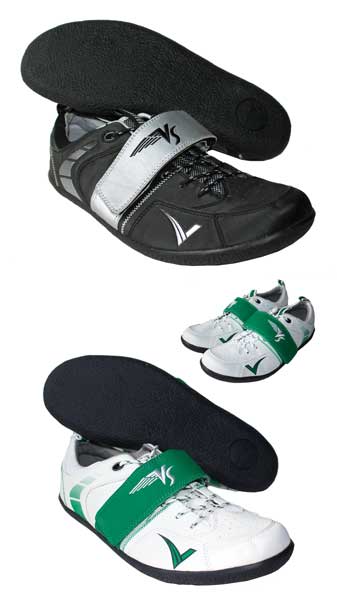
VS Centrifugal, photos courtesy of VS Athletics
Author
-

Larry Eder has had a 52-year involvement in the sport of athletics. Larry has experienced the sport as an athlete, coach, magazine publisher, and now, journalist and blogger. His first article, on Don Bowden, America's first sub-4 minute miler, was published in RW in 1983. Larry has published several magazines on athletics, from American Athletics to the U.S. version of Spikes magazine. He currently manages the content and marketing development of the RunningNetwork, The Shoe Addicts, and RunBlogRun. Of RunBlogRun, his daily pilgrimage with the sport, Larry says: "I have to admit, I love traveling to far away meets, writing about the sport I love, and the athletes I respect, for my readers at runblogrun.com, the most of anything I have ever done, except, maybe running itself." Also does some updates for BBC Sports at key events, which he truly enjoys.
Theme song: Greg Allman, " I'm no Angel."
View all posts


